[ad_1]
Abdominal pumping is one of the most time-consuming tasks in sports. The fitness industry is dominated by horizontal movements, which do not always give the desired result.
Features of standing ab training
Most exercises for the abdominal muscles in fitness are performed lying down. In a vertical position, only hanging leg raises are performed. The main advantage of such movements is the elimination of stress on the lower back. However, abdominal exercises from a standing position differ significantly not only in the execution but also in the load. It is distributed to all core muscles, evenly developing not only the abdominal area but also the lower back. This prevents the development of muscle imbalance.
The main benefits of performing abdominal movements while standing:
- Uniform load on all muscles.
- Avoiding increased stress on the lower back (as well as strengthening the lower back).
- The ability to perform abdominal exercises while standing with dumbbells or other equipment for greater efficiency and powerful muscle pumping.
- Working out the deep layers of muscles that are not involved in regular training.
- Ability to train in limited space.
Top 4 standing abdominal exercises
The most effective standing abs movements for losing belly fat and pumping up muscles, which can be performed at home, in the gym or on the street.
Standing lateral crunches
Ideal for working your abs while standing. Powerfully loads the oblique abdominal muscles, which require more attention to pump (if we are talking about increasing functionality). Movement can also narrow your waist over time. Lateral crunches are performed without weight, so in each approach you need to do as many repetitions as possible (an equal number on each side).
Technique:
- Stand straight, feet shoulder-width apart, back straight. Place your arms out to the sides and bend your elbows.
- Raise your right leg out to the side. At the same time as you bend your knee, try to bring your elbow as close to your leg as possible.
- Pause for 0.5 seconds and place your foot on the floor.
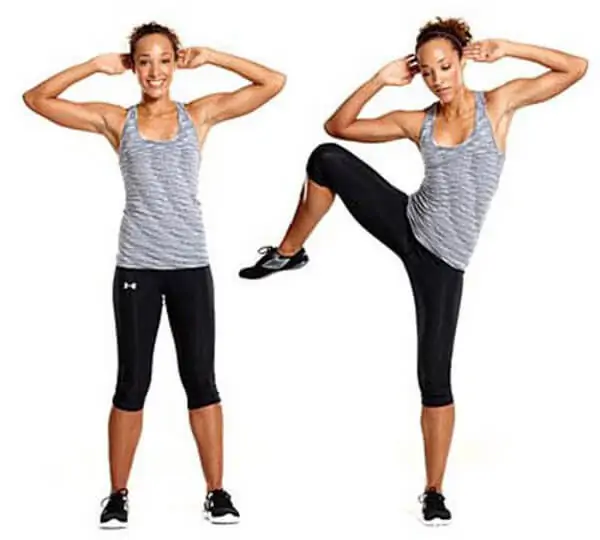
Twisting can be performed alternately (alternating on the right and left sides). Although, in order to pump up the abs while standing, it is more effective to do an approach on one side, and then on the other. This will maintain tension and improve technique.
Standing kettlebell rotation
Rotation is performed with a kettlebell or any other weight. With its help, you can not only pump up your abs while standing, but also significantly strengthen your grip strength. Even though the core muscles work more statically, they receive a powerful load due to stabilization of the body. This movement can also significantly improve working weights in squats and deadlifts.
Technique:
- Take a kettlebell (on relaxed arms) and stand straight, feet shoulder-width apart.
- With one hand, move the weight back in a circle (clockwise).
- At the level of your buttocks, grab the kettlebell with your other hand, maintaining the tempo and strength of the rotation.
- At the same speed, bring the weight to the level where the projectile is in front of you, and then perform the interception again.
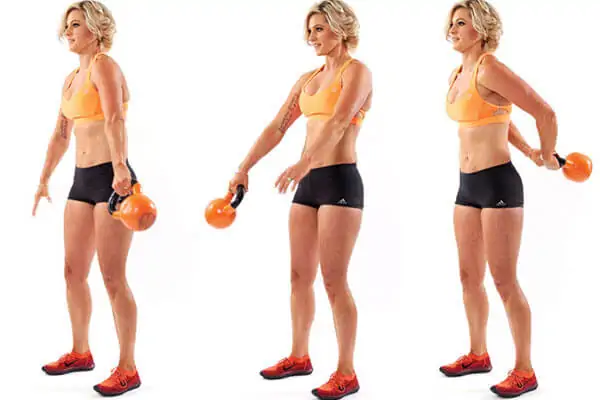
The rotation must be complete, with two interceptions of the projectile in front and behind. Despite the fact that this is an unpopular exercise, it is incredibly effective for working your abs while standing at home.
Climbing Dumbbell Raise
The movement perfectly works not only the core, but also most of the muscles of the body. To perform this, you will need a pair of dumbbells and a cabinet (can be replaced with a bench, chair, or a stack of weights).
Climbing is performed until failure or complete fatigue, so you should not monitor the number of repetitions in the set.
Technique:
- Stand in front of a cabinet and pick up dumbbells.
- Step onto the pedestal with one foot, then lift it off the floor and bring your other foot down.
- With the supporting leg (which takes the first step), walk the other leg forward with a bend in the knee.
- Go down in reverse order.
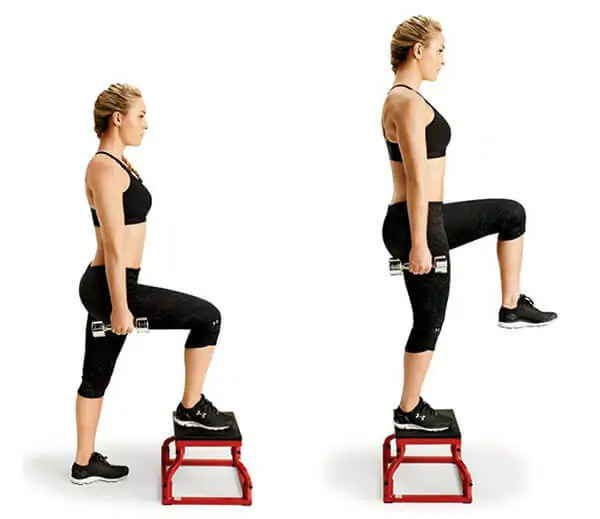
Alternate legs over time (for example, 1 minute) or perform the same number of times on each side. Perform the movement on one side (to failure) followed by a change.
Standing leg raise
A very simple but effective movement. Unlike lying leg raises, it loads more muscles but requires more careful concentration on the abdominal muscles.
Technique:
- Stand straight, feet shoulder-width apart or slightly narrower. Fix your hands on your sides.
- Begin lifting your straight leg at a moderate pace until your thigh is parallel to the floor.
- Additionally, move your body forward a little (but without rounding your back too much), this will increase the efficiency of the lifts.
- Return to the starting position and repeat the same for the second leg.

Lift-ups are great for working your lower abs. It is important to focus the tension so that most of the work is done by the lower abdomen, rather than the strength of the hips and buttocks. Lifts are exclusively aerobic in nature, so try to do them until you feel a burning sensation in the approach.
Lateral bends with dumbbells
The movement is aimed at pumping the oblique abdominal muscles. Allows you to work with heavy weights and strengthens your core muscles well.
Technique:
- Stand up straight, and take a dumbbell in your hand. Feet shoulder-width apart, back straight.
- Begin to slowly lean towards the side (in which the projectile is located).
- Go as low as possible (without bending your back), take a minimal pause, and return to the starting position at the same pace.
- Bend slightly to the other side (10-15 degrees) to better stretch the muscle.
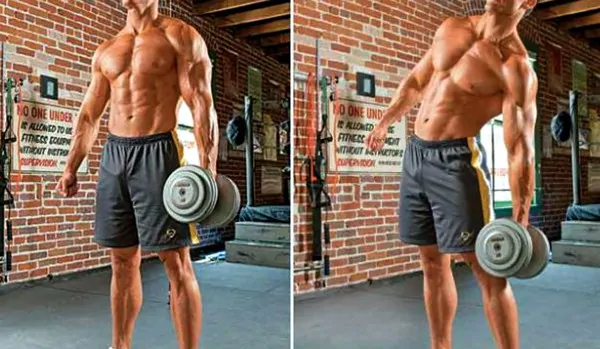
[ad_2]

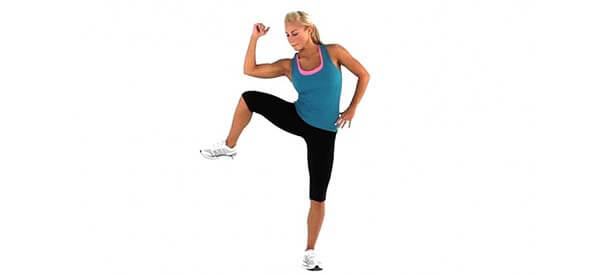
Leave a Comment